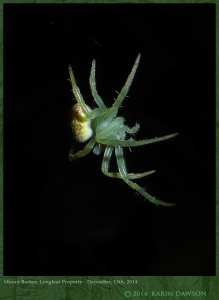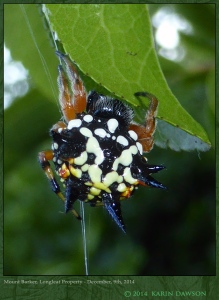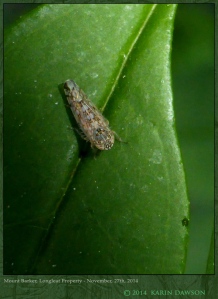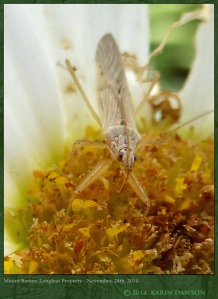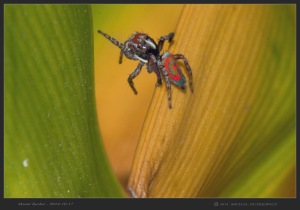
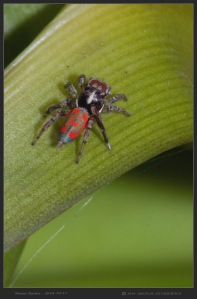
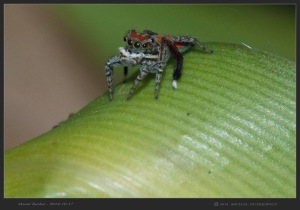


Maratus pavonis aka Dunn’s Peacock Spider
Male
Kingdom: Animalia
Phylum: Arthropoda
Class: Arachnida
Order: Araneae
Family: Salticidae
Subfamily: Euophryinae
Mount Barker, South Australia – Longleat Property – October 17th, 2014 – on a warm, sunny day in the flower garden
Photos: Michal Dutkiewicz
Text: Michal Dutkiewicz & extra additions by Karin Dawson
When Karin Dawson invited me up to photograph Feather-legged Assassin Bugs (As featured on a David Attenborough documentary) and this Peacock Spider, I still couldn’t believe that we had one of these colourful Spiders here in South Australia! – There are a number of species of the Peacock Jumpies in Australia. They are members of the Jumping Spider family Salticidae, and this is, as far as Karin and I can ascertain, the only species that occurs here in South Australia.
Only the males are brightly-coloured. The species occurs from South Australia around the southern east coast of Australia, including Tasmania, and there is a slightly brighter variant with a slightly different abdomen from Western Australia that Jumpies fans from those parts might want to keep a look out for. I wish we could have gotten closer shots, but he was moving very quickly …
Karin observed the female to be about 8 mm long, and the male was only 4 mm long; a big discrepancy in size, but certainly not unusual in the the spider world.
http://www.arachne.org.au/01_cms/details.asp?ID=2446
http://en.wikipedia.org/wiki/Maratus




